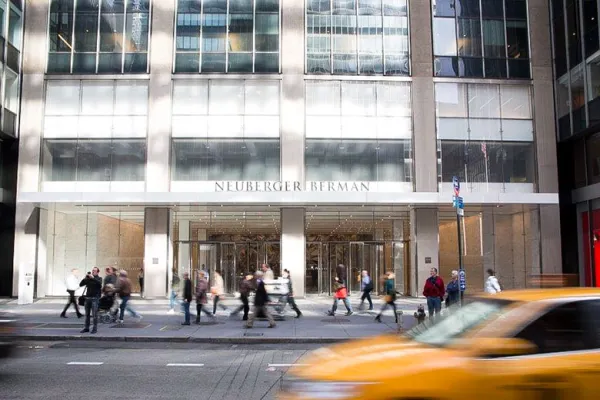After leaving in 2020, Vincent Lorusso Jr. has returned to Clough Capital, the $1.3 billion hedge fund in Boston, and he brought with him something he says more hedge funds should have: ETFs. Charles Clough Jr., the chief global investment strategist at Merrill Lynch from 1987 through 1999, founded the hedge fund in 2000.
Lorusso had worked for the hedge fund for 16 years and liked it, but when the Securities and Exchange Commission approved non-transparent ETFs in 2019, he saw opportunity. Investors would embrace ETFs, which offer tax advantages over traditional mutual funds, now that they were no longer required to fully divulge their holdings, he reasoned. And it wouldn’t hurt to be early. At the end of 2018, there were 1,660 index-based ETFs with $3.2 trillion in assets, compared to fewer than 300 actively-managed ETFs with less than $100 billion. L
With Clough’s support, Lorusso left three years ago and started Changebridge Capital, a hedge fund with two actively managed ETFs: the Changebridge Select Equity ETF (Ticker: CBSE) and the Changebridge Long/Short Equity ETF (Ticker: CBLS).
The ETFs haven’t gotten much traction; their performance has been neither bad nor great, and they have $5 million and $6 million in assets, respectively. “I've been in the industry long enough to know that volatility comes from unusual places, and I didn't anticipate a global pandemic or a lot of the events that we've experienced over the last few years. But when you commit yourself to this part of the industry and being a research analyst and finding opportunities, you just embrace that,” Lorusso said.
The ETFs have been successful enough that when Clough Capital wanted Lorusso to return and become its CEO, the hedge fund wanted him to bring the funds with him. They agreed that Clough Capital’s infrastructure, operations, distribution, and some of its research capabilities, will enable the ETFs to seize an emerging opportunity with investors.
“The firm had always been thoughtful about research and willing to provide the types of products that clients demanded. And it is kind of without a doubt that the active ETF landscape is being demanded,” Lorusso said. “It's only a natural fit for Chuck and the team to be able to extend into that product set with somebody that they trust.”
Clough has offered clients hedge funds, separately managed accounts, closed-end funds, and open-end funds.
Since non-transparent ETFs were given the go-ahead in 2019, the number of active ETFs has grown significantly. Morningstar now tracks 1,194 U.S. actively managed ETFs with $439 billion in total assets.
“I didn't envision, frankly, how quickly active ETFs would get traction. I mean, the growth that we're seeing from some of the largest asset managers and some of the most reputable investors, it seems to be accelerating. I used to say that there were headlines around active ETFs on an almost weekly basis, and now it's almost daily,” Lorusso said.
But the executive still believes the Clough ETFs are ahead of what will become a major trend. Only 18 of the actively managed ETFs tracked by Morningstar are long-short equity funds, and they collectively have just $1.54 billion in assets. That represents a tiny fraction of the funds and assets in the long-short equity hedge fund universe.
It could take managers a full year to establish a firm and or launch ETFs. Then competitors would have to wait three years before they could meaningfully begin marketing them. And that's if they establish a good track record. Clough is just clearing that hurdle. But the firm is in the mix and when the wave of investors they expect begin fully embracing actively managed ETFs, Clough will be ready.
“I love the idea that depending on your investment strategy, your approach and what you're trying to achieve for your client, one structure might be better than the other,” Lorusso said. “I do think we're going to continue to see the massive migration to active ETFs because specifically in long-short equity, and that's what we have, it's just harder to make the case that the ETF structure isn't best for the client.”
If clients can get the strategy they want, with intraday liquidity, more transparency, no lockups and no minimums, and for a lower cost, they are going to choose that, argues Lurusso. “That's really helpful in terms of building asset allocation models and trying to monitor style drift and some of the other things that are an issue, frankly, when you're talking about transparency with a 90-day lag,” he added.
Most actively managed ETF investors are private and Lorusso isn’t sure why institutional investors haven’t fully embraced them.
“I don't know if it's a prestige thing around LPs. Maybe they'd rather have high minimums and quarterly liquidity and fees. But as a practical matter, if they're allocating to a hedge fund today that's a long-short equity shop, I personally would prefer the ETF version of that because why wouldn't I want low minimums and intraday liquidity and tax efficiency?” Lorusso said.
One reason might be that the longest track record the ETFs might have is barely eclipsing three years. Since they are investing in large-, mid- and small-cap companies, capacity isn’t an issue for the fund.
“The more I learned about the tax benefits of ETFs, the more convinced I became that this is going to have to be a tailwind for the industry,” Lorusso said. “And whether that means assets will flow from open-end mutual funds into ETFs, or other product types into ETFs, it just seems self-evident to me that this is going to be an area of growth.”







